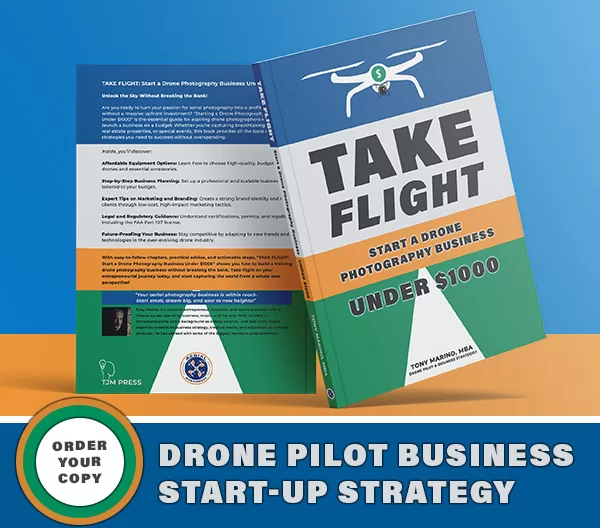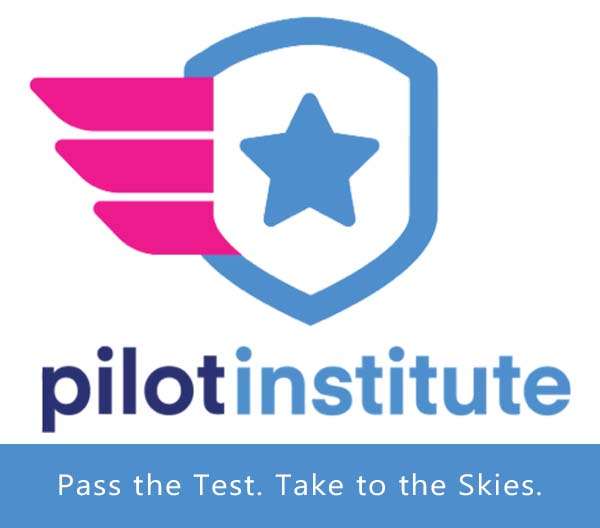
Not only do new drone enthusiasts want to know, but the public wants to know, too! What are the differences between operating an unmanned aerial vehicle (drone) as a recreational aerial hobbyist and flying an aerial drone for commercial purposes? Are you someone who operates your drone for fun and personal pleasure or are you someone who flies professionally for motion picture, real estate, survey, search and rescue, mapping, and YouTuber-for-Profit industry? Answering that question will help you better understand the nuances and differences between recreational and commercially-rated aerial drone pilot-types and missions.
Does the size of the drone matter? Is it the top speed of a given drone? Is it pilot age? In a word, “No.” These essential factors are attributed directly to an individual wishing to operate a UAV weighing more than 250 grams – to become either an FAA registered “Recreational” sUAS pilot or “Commercially-rated – Part 107” sUAS Pilot-in-command.
Be sure to remain abreast of the rules as FAA rules are subject to change.
Rules for Recreational Aerial Drone Flyers
The Exception for Limited Operation of Unmanned Aircraft (USC 44809) is the law that describes how, when, and where you can fly drones for recreational purposes. Following these rules will keep people, your drone and our airspace safe:
- Fly only for recreational purposes (enjoyment).
- Follow the safety guidelines of an FAA-recognized Community Based Organization (CBO). Note: We have not yet begun officially recognizing CBOs. Recreational flyers are directed to follow the safety guidelines of existing aeromodelling organizations or use the FAA provided safety guidelines per Advisory Circular 91-57B.
- Keep your drone within the visual line of sight or use a visual observer who is co-located (physically next to) and in direct communication with you.
- Give way to and do not interfere with manned aircraft.
- Fly at or below 400′ in controlled airspace (Class B, C, D, and E) only with prior authorization by using LAANC or DroneZone.
- Fly at or below 400 feet in Class G (uncontrolled) airspace. Note: Flying drones in certain airspace is not allowed. Classes of airspace and flying restrictions can be found on our B4UFLY app or the UAS Facility Maps webpage.
- Take The Recreational UAS Safety Test (TRUST) and carry proof of test passage.
- Have a current registration, mark (PDF) your drones on the outside with the registration number, and carry proof of registration with you.
- Do not operate your drone in a dangerous manner. For example: Do not interfere with emergency response or law enforcement activities. Do not fly under the influence of drugs or alcohol.
Individuals violating any of these rules, and/or operating in a dangerous manner, may be subject to FAA enforcement action.
For more information, read Advisory Circular 91-57B.
Rules for Certified Remote Pilots (including Commercial Operators)
If you have a small drone that is less than 55 pounds, you can fly for work or business by following the Part 107 guidelines.
To fly under Part 107 rules, there are 3 main steps:
Step 1: Learn the Rules
Make sure you understand what is and is not allowed under Part 107 rules:
14 CFR Part 107 Small Unmanned Aircraft Systems
If you are not sure if Part 107 rules work for you and your intended operation check our user identification tool.
Some operations are not covered by Part 107 and will require a waiver. Here are some common examples of Part 107 sections that are subject to waiver:
- §107.25* Operation from a moving vehicle or aircraft
- §107.29 Operation at Night
- §107.31* Visual line of sight aircraft operation
- §107.33 Visual observer
- §107.35 Operation of multiple small unmanned aircraft systems
- §107.37(a) Yielding the right of way
- §107.39 Operation over human beings
- §107.41 Operation in certain airspace
- §107.51 Operating limitations for small unmanned aircraft
- §107.145 Operations Over Moving Vehicles
Learn more about Part 107 Waivers.
* The FAA will not waive this section to allow the carriage of property of another by aircraft for compensation or hire.
Drone operators should avoid flying near airports because it is difficult for manned aircraft to see and avoid a drone while flying. Remember that drone operators must avoid manned aircraft and are responsible for any safety hazard their drone creates in an airport environment.
Step 2: Become an FAA-Certified Drone Pilot by Passing the Knowledge Test
To be eligible to get your Remote Pilot Certificate, you must be:
- At least 16 years old
- Able to read, write, speak, and understand English
- Be in a physical and mental condition to safely fly a UAS
Study for the Knowledge Test
Review Knowledge Test Suggested Study Materials provided by the FAA.
Obtain an FAA Tracking Number (FTN)
Create an Integrated Airman Certification and Rating Application (IACRA) profile prior to registering for the knowledge test.
Schedule an Appointment
Take the Knowledge Test at an FAA-approved Knowledge Testing Center.
Complete FAA Form 8710-13
Once you’ve passed your test, for a remote pilot certificate (FAA Airman Certificate and/or Rating Application) login the FAA Integrated Airman Certificate and/or Rating Application system (IACRA)* to complete FAA form 8710-13.
Review the full process to get your Remote Pilot Certificate.
Step 3: Register your Drone with the FAA
Registration costs $5 and is valid for 3 years. You’ll need a credit or debit card and the make and model of your drone handy in order to register. Learn more about registering your drone.
- Create an account and register your drone at dronezone.faa.gov. Select “Fly sUAS under Part 107.”
- Once you’ve registered, mark your drone (PDF) with your registration number in case it gets lost or stolen.
Learn more about Registration and Marking Requirements for Small Unmanned Aircraft, 14 CFR part 48.
Remember:
- Always fly your drone safely and within FAA guidelines and regulations.
- It is up to you as a drone pilot to know the rules of the sky, and where it is and is not safe to fly. (Where to fly in Oregon)
- Aren’t sure if Part 107 is right for you and your operation? Try the FAA’s user identification tool or contact the FAA for more information.
The Takeaway
Understanding the distinctions between recreational and commercial aerial drone flights is crucial for both drone enthusiasts and the general public. Whether you fly a drone for personal enjoyment or professional purposes, there are specific rules and guidelines set by the Federal Aviation Administration (FAA) that must be followed to ensure safety and compliance. Recreational drone flyers must adhere to regulations such as flying for enjoyment, following safety guidelines provided by FAA-recognized organizations, maintaining visual line of sight, giving way to manned aircraft, and operating within authorized airspace. On the other hand, certified remote pilots and commercial operators must comply with Part 107 guidelines, which involve learning the rules, passing the FAA knowledge test, obtaining a remote pilot certificate, and registering their drones with the FAA. It is essential to stay updated on FAA rules, as they may change over time.
By following these regulations and prioritizing safety, drone pilots can enjoy their flights while contributing to a responsible and secure airspace environment.
Be smart, safe, and forever fly!
If you have any questions, let us know! If you’d like to hire us, you can get more information here.
Written by: Tony Marino, MBA – FAA Certified Part 107 Commercial Drone Pilot and Chief Business Strategist at Aerial Northwest
Disclaimer: The information provided in this blog post is for general informational purposes only and should not be construed as legal advice.









Leave a Reply
Your email is always safe with us.